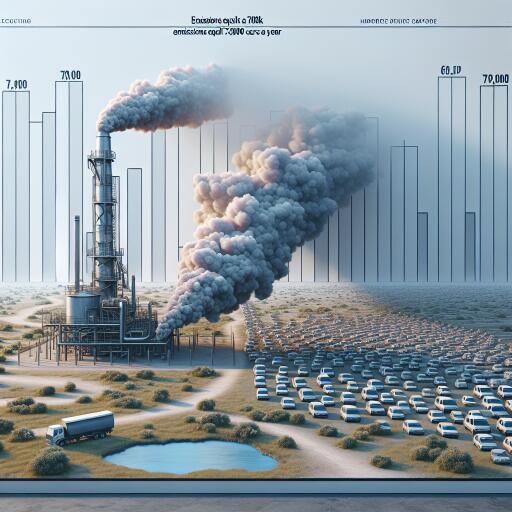
A Methane Disaster: 6-Month Leak Equals Yearly Emissions of Nearly 800,000 Cars
In a revealing study based on satellite analysis, researchers have brought to light a catastrophic methane leak from the Karaturun East oil field in 2023. Spanning from June to December, a fire raged, releasing approximately 127,000 metric tons of methane into the atmosphere. This volume of gas is comparable to the annual emissions produced by 791,318 gasoline vehicles, as outlined by the standard metrics on the Environmental Protection Agency’s website.
Methane, a potent greenhouse gas, packs a punch in terms of its impact on global warming—being about 28 times more powerful than carbon dioxide over a 100-year period. It’s a significant contributor, accounting for 30% of the global temperature increase post-Industrial Revolution. The incident at Karaturun sheds light on the pressing issue of methane emissions and their far-reaching impacts on climate change.
The ordeal began on June 9 during an exploratory drilling operation when a sudden blowout ignited a fire, resulting in a 32-foot-high blaze and creating a crater 50 feet across. This made the task of sealing the leak immensely challenging. However, after months of efforts, the well was finally capped on December 25, with the well operator Buzachi Neft managing to halt the leak by injecting drilling mud into the wellbore. This endeavor was documented in an industry report by the oil and gas publication Upstream.
Quantifying methane emissions, especially from remote and inaccessible leaks, has always been a challenging task for scientists. However, the use of satellite data in this instance proved to be a game-changer. The European research team tracked 115 distinct methane emissions from the Kazakhstan site during this six-month period. Their innovative approach exemplifies the potential of satellite technology in monitoring environmental disasters and uncovering otherwise unnoticed leaks.
The magnitude of the methane release in Kazakhstan is among the most severe ever recorded. Luis Guanter, a researcher from the Polytechnic University of Valencia and a member of the examining team, noted its significance. By his accounts, the incident ranks second only to the Nord Stream pipeline sabotage in terms of the volume of methane leaked.
Controversy surrounds the event, as Buzachi Neft, the company responsible for the well, contests the findings. The firm argues that the amount of methane released was “negligible,” a statement that starkly contrasts with the data presented by the research team. Despite attempts to seek clarification or comments on these claims, Buzachi Neft has yet to provide a response outside of their standard business hours.
This incident underscores the urgent necessity for improved monitoring and regulation of methane emissions worldwide. As the fight against climate change intensifies, understanding and mitigating the impacts of potent greenhouse gases like methane is more critical than ever. Satellite technology could play a pivotal role in this battle, offering a means to detect, quantify, and perhaps prevent disastrous leaks before they inflict irreparable damage to our planet.





Leave a Reply